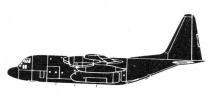Incident Overview

Description
During initial approach to the crew got clearance to increase speed. The cabin crew was carrying out the safety checks and the passengers were all seated and the “Fasten seat belt” signs were on. The aircraft was on autopilot in the Vertical Speed mode, with the engines at flight idle. When descending through FL090 the airspeed increased beyond 330 KIAS and approached the maximum allowed of 340 KIAS. On observing this the copilot, who was PF (Pilot Flying), initiated a nose-up trim change with the Pitch Control Wheel in order to reduce speed. As he did not notice an immediate effect of the trimming he pulled back on the control wheel. The autopilot disconnected at this point, either manually by the pilot or automatically by the system – it has not been possible to establish which. At disconnect there was a sharp nose-up movement, followed by a nose-down movement. The G-load varied from 2.77 to 0.04 G. One cabin crew member suffered serious injuries. The probable cause was that the autopilot disconnect came after the pilot’s control input.
Primary Cause
Autopilot disconnect triggered by pilot control input.Autopilot disconnect triggered by pilot control input.Share on:





